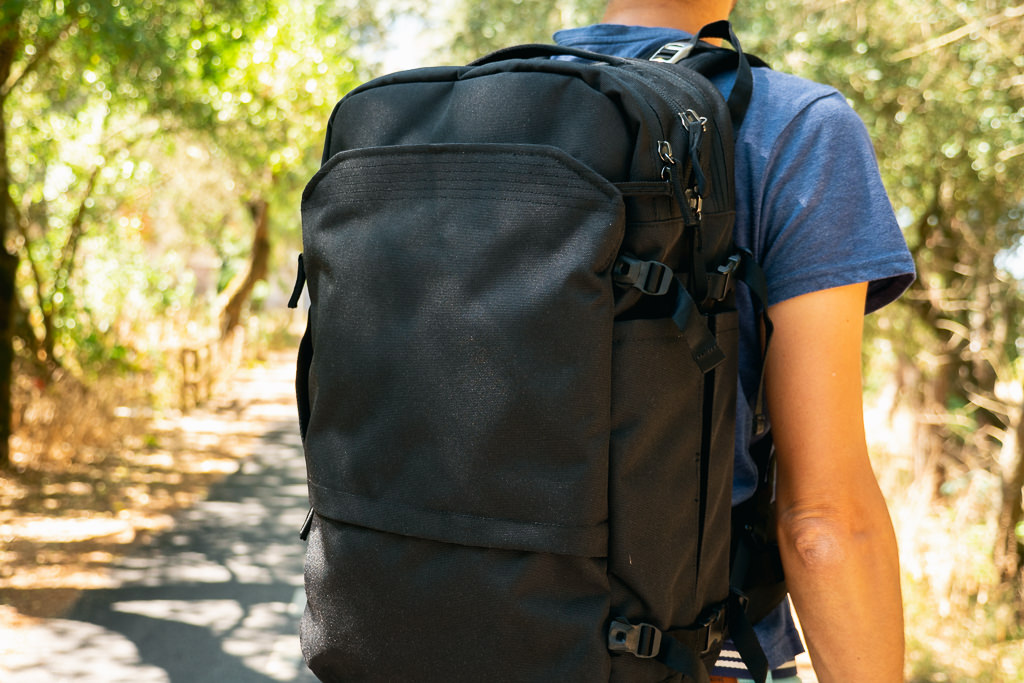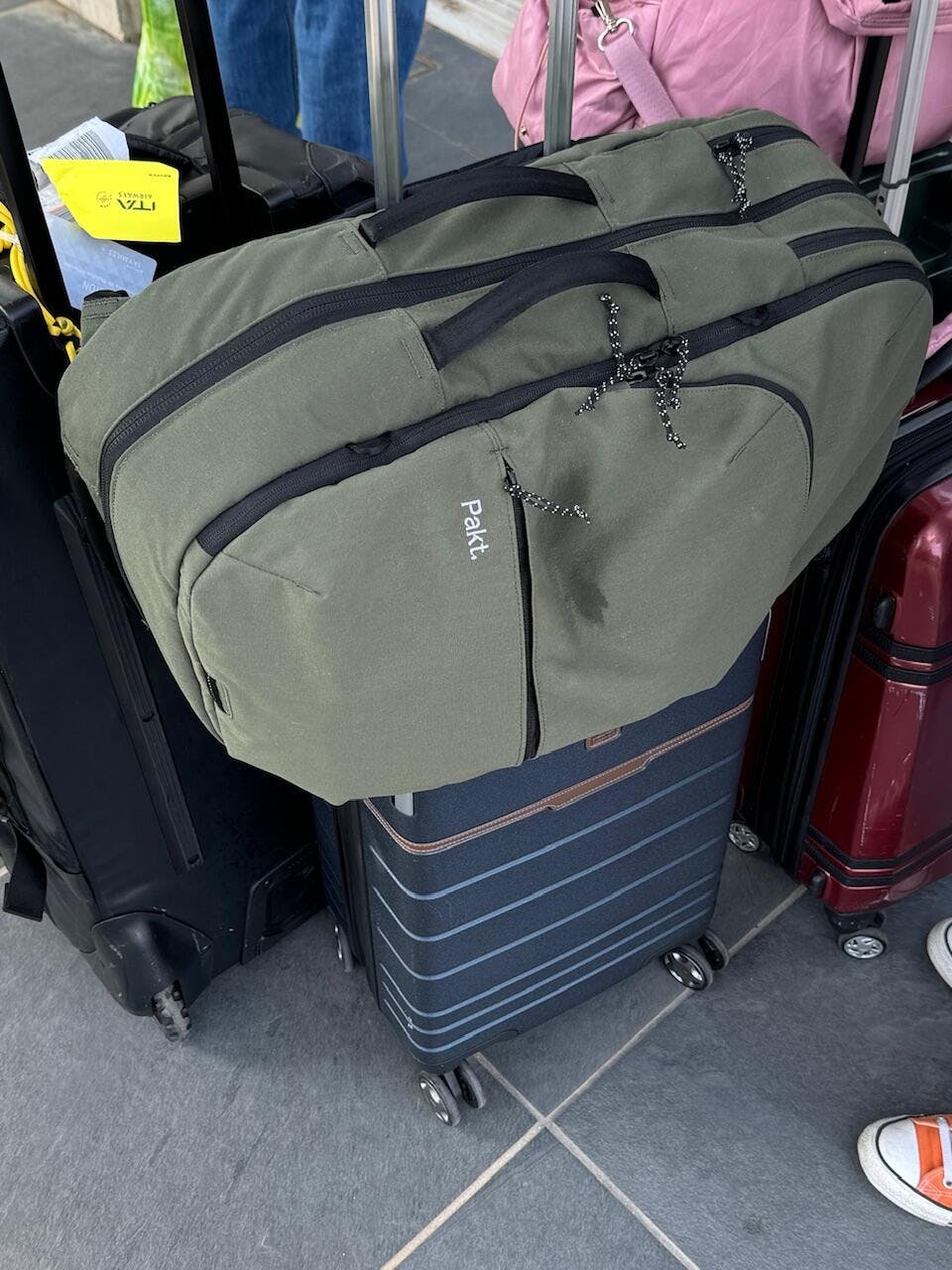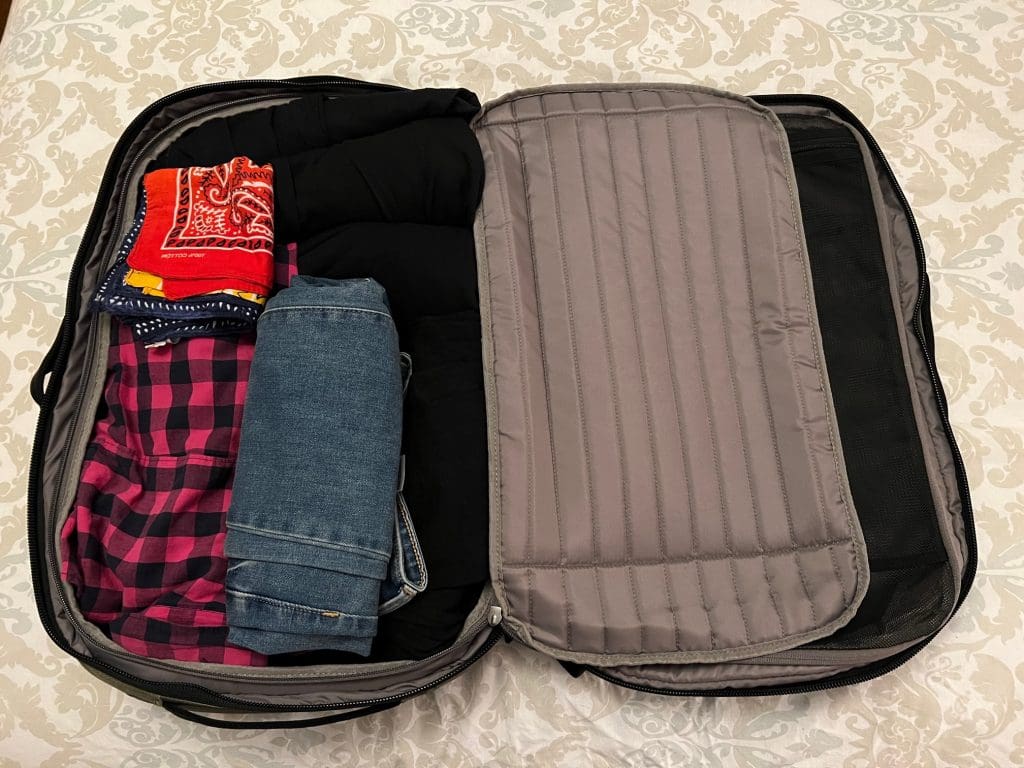After 3 months and 12 countries, the Pakt Travel Backpack excels in organization and sustainability but shows limitations in long-term carry comfort.

Table of Contents
- Initial Thoughts: Unboxing the Pakt Travel Backpack
- A Deep Dive into the Backpack’s Core Features
- The Real-World Gauntlet: 3 Months, 12 Countries
- How Comfortable Is It for Long-Term Carry?
- Durability Report: Signs of Wear After 90 Days
- What Fits? A Realistic One-Bag Packing List
- Weighing the Pros and Cons
- Who Should Buy the Pakt Travel Backpack? (And Who Shouldn’t?)
- How Does It Compare to Other Travel Bags?
- The Final Verdict for 2025

Initial Thoughts: Unboxing the Pakt Travel Backpack
Opening the box reveals a backpack that feels both thoughtfully designed and environmentally conscious. The first impression is of its clean, minimalist aesthetic and the unique texture of the 900D recycled polyester canvas. Unlike traditional ballistic nylon, it has a softer, more fabric-like hand feel. There is a noticeable absence of excessive branding, which lends to its sophisticated, understated look. The zippers, a critical component of any travel bag, are robust YKK models that glide smoothly around the entire clamshell opening. The overall structure is semi-rigid, meaning it holds its shape well even when empty, which makes packing significantly easier. It doesn’t feel flimsy; rather, it suggests a durable build quality ready for the rigors of travel.

A Deep Dive into the Backpack’s Core Features
What sets this backpack apart in a crowded market? The answer lies in its unique combination of access, organization, and clever design elements that cater specifically to the one-bag traveler. It’s more than just a container; it’s a mobile closet and office.
Exterior Anatomy: Materials and Access
The exterior of the Pakt backpack is a masterclass in functional minimalism. The primary material is a durable, water-resistant rPET (recycled polyethylene terephthalate) that holds up well against light rain and scuffs. One of its standout features is the top-loading zip access, which allows you to quickly grab an item from the top of the main compartment without fully opening the bag—a lifesaver for retrieving a jacket or book mid-journey. The bag includes four grab handles (top, bottom, and both sides), making it incredibly easy to pull from overhead bins or luggage racks from any angle. The back panel is padded and features an airflow channel, while the stowable shoulder straps and removable hip belt allow it to be converted into a more streamlined duffel-style bag for checking in or carrying short distances.
Interior Organization: The Dual-Compartment Clamshell
The magic of the Pakt backpack truly reveals itself when you unzip its main zipper. The bag splits open into a full clamshell design, revealing two distinct, large compartments. One side is a spacious, open area perfect for bulkier items like packing cubes filled with clothes or a pair of shoes. The other side is zippered and features a mesh divider, ideal for separating clean and dirty laundry or organizing outfits. This dual-sided layout mimics the experience of packing a traditional suitcase, providing a level of organization that is often missing in standard top-loading backpacks. It eliminates the dreaded “digging through the void” to find something at the bottom of your bag.
Pockets and Sleeves: A Place for Everything
Beyond the main compartments, the Pakt is loaded with purpose-built pockets. A fleece-lined top pocket provides a safe, scratch-free spot for sunglasses or a smartphone. The front zippered compartment contains an admin panel with slots for pens, a passport, and charging cables. The most critical pocket for the modern traveler is the rear laptop compartment. It’s well-padded, suspended off the bottom of the bag for drop protection, and features a false bottom. This compartment can comfortably hold up to a 16-inch laptop and has an additional sleeve for a tablet or documents. There’s also a discreet water bottle pocket that zips away when not in use, maintaining the bag’s sleek profile.
The Real-World Gauntlet: 3 Months, 12 Countries
A spec sheet can only tell you so much. To truly understand this backpack, we took it on a demanding journey across Europe and Southeast Asia, subjecting it to budget airlines, crowded trains, bustling city streets, and varied climates.
Navigating Airports and Train Stations
The Pakt backpack is sized to be carry-on compliant for most major airlines, a claim that held true on over a dozen flights. Its clamshell design made security checks a breeze; I could open the bag flat, expose my laptop and liquids, and close it back up in seconds. The multiple grab handles were invaluable for quickly stowing and retrieving the bag from overhead compartments. When navigating crowded train stations, the ability to tuck away the shoulder straps and carry it by the side handle proved useful for avoiding snags and bumps in tight spaces. The top-access zipper was particularly handy for grabbing my headphones or passport without a full-on unpacking session.
Daily Use in Urban Exploration
While designed for travel *between* destinations, a travel backpack often doubles as a daypack. In this role, the Pakt is a bit of a mixed bag. When not fully packed, its semi-rigid structure can feel a bit bulky for navigating crowded markets or cafes. However, for days that required carrying a laptop, a jacket, and other essentials, it performed admirably. The quick-access pockets meant my phone, wallet, and keys were always within easy reach. The biggest challenge was its size; at 35L, it’s often more than needed for a simple day out, highlighting the trade-off between a dedicated one-bag travel solution and a more versatile, smaller daypack.
How Comfortable Is It for Long-Term Carry?
Comfort is where long-term testing reveals the most critical insights. The shoulder straps are well-padded and feature an adjustable sternum strap, which is essential for distributing weight. For short walks from the airport to a taxi or from a train station to a hotel, the carry system is perfectly adequate. However, during extended periods of wear—such as walking for over 30 minutes to find an Airbnb or standing in long immigration lines—the limitations of the back panel became apparent. While it has an air channel, it lacks the advanced, molded foam and suspension systems found in high-end hiking packs. When fully packed to its 10-12 kg capacity, the weight can start to feel concentrated on the shoulders. The removable hip belt helps, but it’s more for stability than true weight transfer. For a “travel” backpack, this is a reasonable compromise, but users planning extensive walking with a full load should take note.
Durability Report: Signs of Wear After 90 Days
After three months of being tossed in overhead bins, slid under bus seats, and exposed to various weather conditions, the Pakt backpack held up remarkably well. The 900D rPET material showed no signs of tearing or abrasion, and the water-resistant coating effectively repelled light rain. All zippers remained functional, and no stitching came loose. The only noticeable wear was minor scuffing on the bottom corners, which is to be expected. The internal mesh dividers and pocket linings remained fully intact. This level of durability speaks to the quality of the materials and construction, suggesting the backpack is a reliable long-term investment.
What Fits? A Realistic One-Bag Packing List
The 35L capacity is a sweet spot for one-bag travel, accommodating enough for a multi-week trip if you pack smart. Here is a sample of what comfortably fit inside for this journey:
| Item Category | Specific Items |
|---|---|
| Clothing (in packing cubes) | 5 t-shirts, 2 long-sleeve shirts, 1 pair of jeans, 1 pair of travel pants, 7 pairs of underwear/socks, 1 lightweight sweater, 1 rain shell |
| Shoes | 1 pair of packable sneakers |
| Toiletries | Toiletry bag with travel-sized liquids, toothbrush, solid cologne |
| Electronics | 15″ laptop, tablet, Kindle, universal power adapter, power bank, all necessary cables, headphones |
| Miscellaneous | Passport, documents, sunglasses, small notebook, pen, collapsible water bottle |
Weighing the Pros and Cons
No backpack is perfect. The Pakt excels in many areas but has a few drawbacks to consider. This balanced view helps determine if its strengths align with your travel style.
| Pros | Cons |
|---|---|
| Exceptional Organization: The dual-compartment clamshell design is a game-changer for keeping gear tidy. | Moderate Carry Comfort: The back panel and harness are fine for A-to-B travel but can become uncomfortable on long walks with a heavy load. |
| Sustainable Materials: Made from recycled plastics, appealing to the eco-conscious traveler. | Slightly Bulky for Day Use: Its structure, while great for packing, can feel oversized when not fully loaded. |
| Thoughtful Features: Stowable straps, multiple grab handles, and smart pocket placement enhance usability. | Premium Price Point: It is a significant investment compared to more basic travel backpacks. |
| Durable Construction: High-quality materials and YKK zippers ensure long-lasting performance. | Minimalist Aesthetic Not for Everyone: Some may prefer more external features or a different style. |
Who Should Buy the Pakt Travel Backpack? (And Who Shouldn’t?)
This backpack is ideally suited for the digital nomad, the organized weekender, and the one-bag minimalist. If your travel involves moving between cities via planes and trains, and your priority is keeping your clothes, tech, and documents perfectly organized and accessible, this bag is a top-tier choice. Its suitcase-like packing system and carry-on compliance are perfectly tailored for this modern travel style.
However, it might not be the best fit for adventure travelers or backpackers who plan to do a lot of trekking or walking long distances with their gear. The harness system, while competent, is not designed for the same level of ergonomic support as a dedicated hiking pack. Additionally, travelers on a tight budget may find the price prohibitive.
How Does It Compare to Other Travel Bags?
In the world of premium carry-on backpacks, the Pakt competes with brands like AER, Peak Design, and Tortuga. It stands out with its strong emphasis on sustainable materials and its unique dual-compartment layout. While AER packs often have a more urban, tech-focused design and Peak Design focuses on modularity for photographers, the Pakt strikes a balance that feels specifically tuned for the generalist one-bag traveler.
For travelers seeking a different philosophy altogether, one rooted in heritage and natural materials, a full-grain leather bag presents a compelling alternative. While the Pakt champions modern recycled fabrics, a bag crafted from leather, such as the Beldtura Voyager Leather Duffel Bag, offers a different kind of journey. It develops a rich, unique patina over time, telling the story of your travels. This style prioritizes timeless aesthetics and the unparalleled durability of high-quality leather, appealing to those who view their luggage not just as a tool, but as a long-term companion piece that gets better with age.
The Final Verdict for 2025
So, is the Pakt Travel Backpack worth your money in 2025? After an extensive 3-month test, the answer is a resounding yes, for the right type of traveler. Its ingenious organizational system is second to none, making the process of living out of a single bag remarkably simple and stress-free. The build quality and sustainable mission are highly commendable and justify the investment.
While its carry comfort has limits under heavy loads and long distances, it excels in its primary role: moving efficiently and organized through the modern travel landscape of airports, cities, and hotels. It’s a specialized tool that perfects the art of one-bag travel. If your journeys align with that profile, the Pakt Travel Backpack is one of the most capable, well-designed, and enjoyable travel companions you can own.



